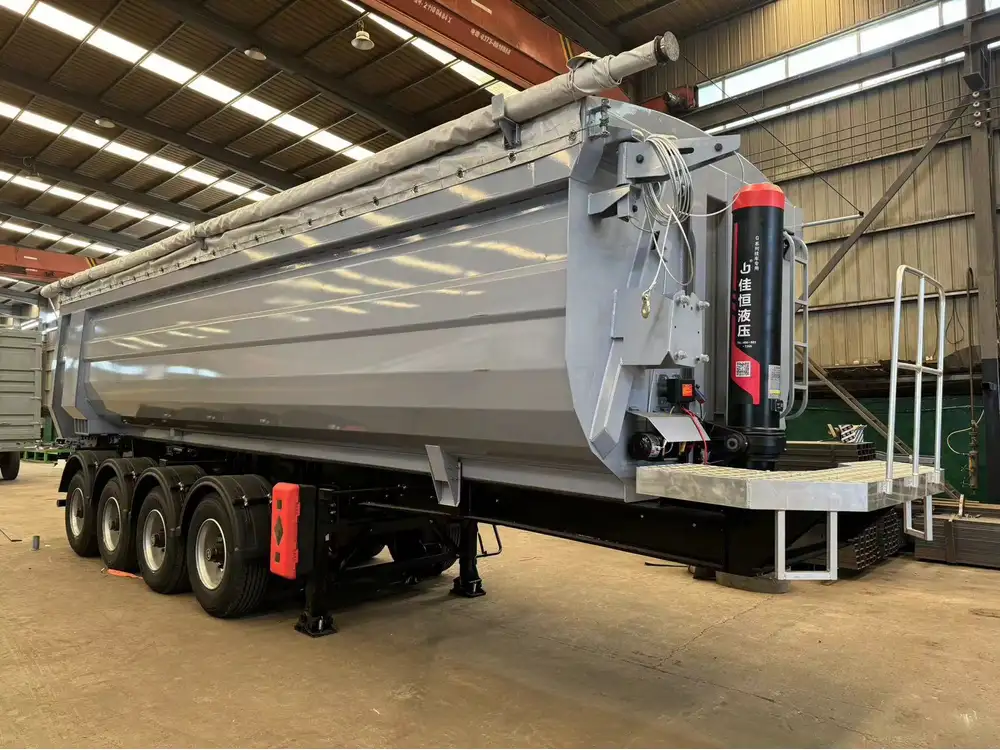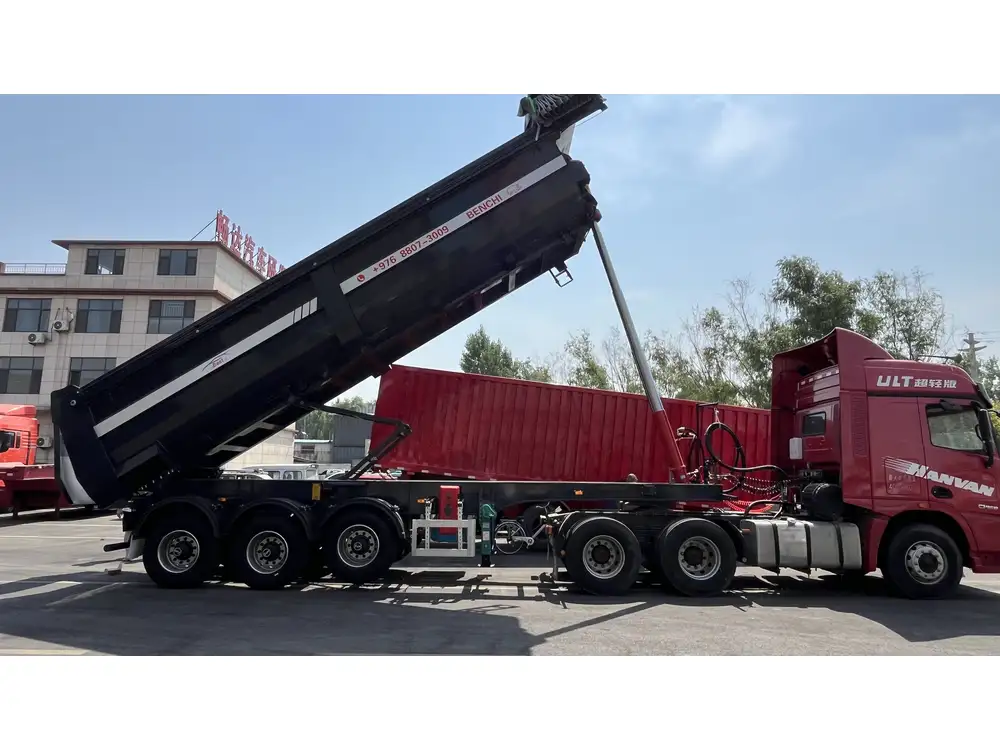When it comes to hauling materials such as gravel, the choice of the right trailer can significantly influence efficiency and operational success. Dump trailers, renowned for their versatility and ease of unloading, are frequently utilized in construction, landscaping, and agriculture. However, one common question that arises among operators and businesses is: How much gravel can a dump trailer haul? The answer to this question involves several factors, such as dump trailer size, weight limits, and gravel density. This article will delve deeply into these considerations, furnishing you with the knowledge needed to optimize your haulage operations.
Understanding Dump Trailer Capacities
Types of Dump Trailers
Here, we break down the common types of dump trailers you might encounter in the market:
| Type | Description | Typical Capacity |
|---|---|---|
| Single Axle | Compact trailers perfect for smaller projects | 5 to 10 cubic yards |
| Tandem Axle | Balance between capacity and maneuverability; ideal for medium-sized loads | 10 to 14 cubic yards |
| Tri-Axle | Designed for heavy-duty operations; suitable for larger quantities of materials | 14 to 20 cubic yards |
| Super Dump | Equipped with additional axles to increase load capacity without sacrificing stability | 20 to 24 cubic yards |

Determining Payload Capacity
To accurately ascertain how much gravel a dump trailer can haul, consider these key factors:
- Gross Vehicle Weight Rating (GVWR): This maximum weight includes the trailer’s weight plus cargo. Exceeding this limit can result in fines and unsafe driving conditions.
- Payload Capacity: This is the maximum weight the trailer can carry, calculated as GVWR minus the empty weight of the trailer.
- Volume Capacity: Essential for planning loads, the volume capacity is determined by the trailer’s dimensions and configuration.
Sample Calculation
Let’s consider a tandem axle dump trailer with a GVWR of 14,000 pounds and an empty weight of 4,000 pounds. The payload capacity can be calculated as follows:
[ \text{Payload Capacity} = \text{GVWR} – \text{Empty Weight} ] [ \text{Payload Capacity} = 14,000 – 4,000 = 10,000 \text{ pounds} ]Next, if gravel weighs approximately 1,500 pounds per cubic yard, the volume of gravel that can be hauled is:
[ \text{Cubic Yards} = \frac{\text{Payload Capacity}}{\text{Weight per Cubic Yard}} ] [ \text{Cubic Yards} = \frac{10,000}{1,500} \approx 6.67 \text{ cubic yards} ]Therefore, this specific tandem axle dump trailer can haul approximately 6.67 cubic yards of gravel.
Evaluating Gravel Density and Weight

Gravel Types and Their Characteristics
Gravel comes in various types, each with different densities, which will influence how much can be transported:
| Type of Gravel | Weight per Cubic Yard (lbs) | Characteristics |
|---|---|---|
| Crushed Stone | 1,500 – 1,700 | Angular and sharp edges, excellent for drainage |
| Pea Gravel | 1,200 – 1,400 | Smooth, rounded stones; commonly used in landscaping |
| River Rock | 1,500 – 1,600 | Smooth and usually larger; good for decorative use |
| Screenings | 1,700 – 1,900 | Finer particles; often used in concrete mixtures |
Choosing the Right Gravel for Your Needs
The weight of gravel can significantly affect how much can be transported. For instance, transporting heavier types like screenings will reduce the cubic yardage compared to lighter options like pea gravel. Understanding these differences helps in optimizing load management:
Considerations for Choosing Gravel Type:
- Project Requirements: Determine the specific purposes, such as drainage vs. decorative use.
- Weight Limits: Be aware of the limits imposed by your dump trailer’s design and regulations.

Dump Trailer Loading Best Practices
Loading a dump trailer efficiently and safely is crucial to smooth operations:
Step-by-Step Loading Procedure
- Check Weight Limits: Before loading, ensure you’re familiar with your trailer’s GVWR and payload capacity.
- Distribute Load Evenly: Center the load over the axles to maintain stability during transportation.
- Use Appropriate Equipment: Heavy machinery can assist in achieving an even distribution while avoiding soil compaction.
- Secure the Load: While gravel typically does not shift like other materials, ensuring that the load remains secure throughout travel is necessary.
Potential Issues with Overloading
Overloading not only risks accidents but can also lead to wear and tear on the equipment, reduced efficiency, and increased fuel consumption. Operators should consistently monitor the weight to ensure it falls within acceptable limits.

Legal Regulations and Compliance
Understanding the legal landscape surrounding dump trailer operation is paramount for any operator. Here are some key points regarding compliance:
- Weight Restrictions: Regulations vary by state and locality, but most have strict weight limits for public roads.
- Permits: Specific routes may require permits for oversized loads; check with your local transportation authority.
- Safety Checks: Regular inspections to ensure your trailer complies with all safety regulations can prevent accidents and fines.
Maintenance Tips for Dump Trailers
Proper maintenance extends the lifespan of your trailer, ensuring it remains efficient and safe. Here are some fundamental maintenance practices:
| Task | Frequency | Description |
|---|---|---|
| Tire Inspection | Monthly | Check for wear and inflation; replace if necessary |
| Brake System Check | Every 6 months | Ensure brakes are functioning correctly |
| Grease Axles and Joints | Quarterly | Keeps moving parts lubricated |
| Electrical System Check | Every 3 months | Inspect wiring and lights for operability |
Signs It’s Time for Replacement
Being vigilant about signs of wear can save downtime:
- Unusual vibrations during hauling
- Increased difficulty in raising the dump bed
- Excessive rust or damage to the frame

Conclusion
Understanding the intricacies of how much gravel a dump trailer can haul requires a synthesis of knowledge regarding trailer types, weight capacities, and gravel densities. By leveraging this information, operators can optimize their operations for efficiency, compliance, and safety. Whether you’re involved in construction, landscaping, or any other industry requiring gravel transport, having the right trailer and understanding its limitations is essential for success.
By making informed decisions, conducting routine maintenance, and adhering to legal regulations, your haulage operations can become not only efficient but also lucrative. So, whether you’re hauling heavy-duty screenings for a construction site or lighter pea gravel for landscaping projects, the specifics elaborated in this guide will serve as your roadmap to haulage excellence.



